A fruit from Mexico is changing lives in Bengal
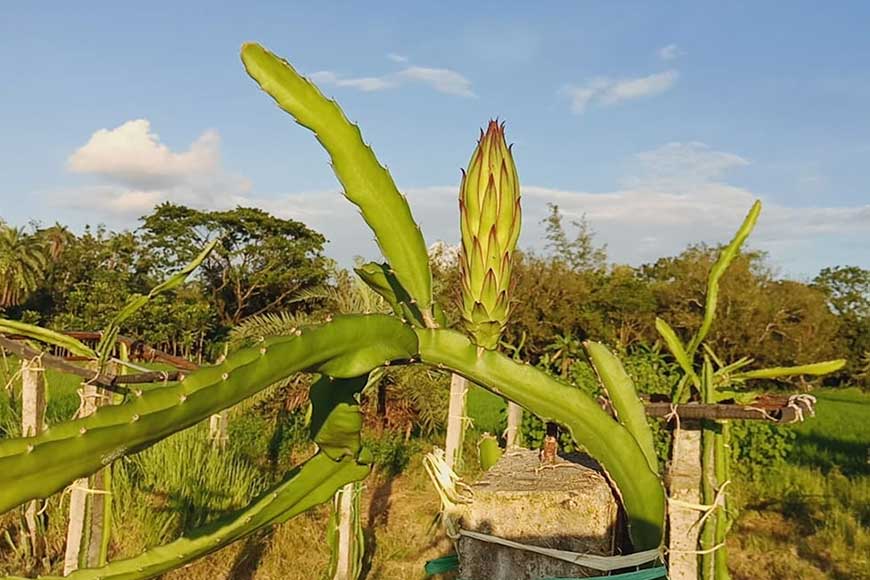
The dragon fruit, also known as 'pitaya', and sometimes as strawberry pear, is a tropical fruit with a distinctive bright red skin and sweet, seed-filled pulp. A native of Central America, it is particularly common in Mexico. Well, there's now a little bit of Mexico in Bhangar, 24 Parganas (South) district, where farmers have begun commercially cultivating this exotic fruit.
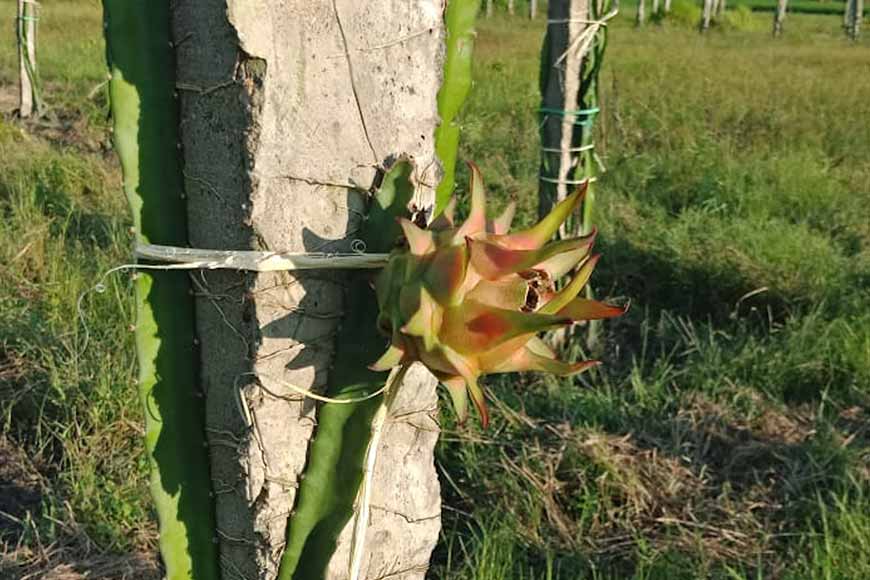
The rare, hitherto expensive dragon fruit is well suited to tropical and subtropical climates, and its numerous health benefits have become a topic of interest in recent times. Among other things, it is rich in antioxidants such as flavonoids, phenolic acid, and betacyanin. It is also naturally fat-free and high in fiber content, and some experts have said it can actually help reduce blood sugar levels, though there is no definitive evidence of this yet. However, it definitely contains prebiotics, which feed the healthy bacteria called probiotics present in your system. Finally, it also strengthens your immune system, a critical consideration in these pandemic times.
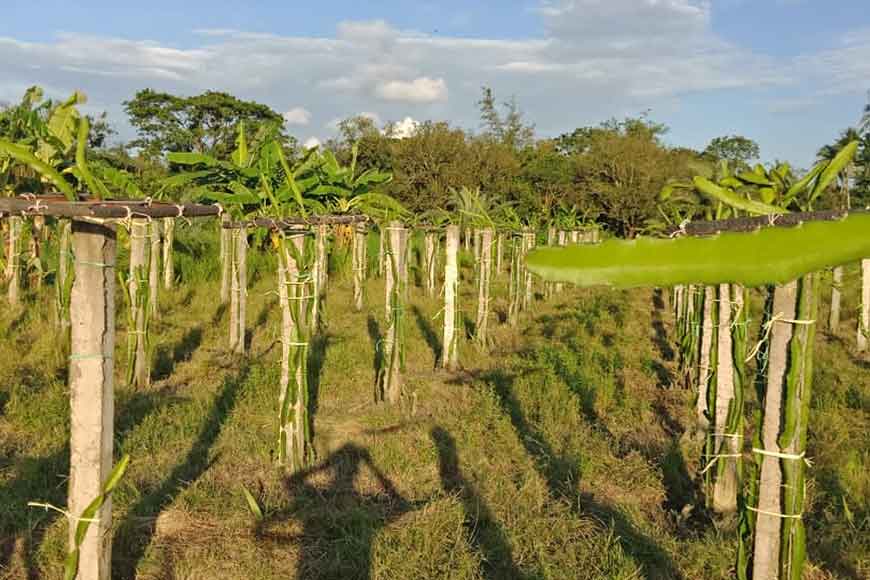
Shaim al Azaad of Polerhat 2, one of the farmers at the forefront of the dragon fruit cultivation drive in Bhangar, has chosen the relatively rough soil of the area for his project. At present, the focus is on a steady, consistent income, and economic self-sufficiency of farmers in different parts of Bhangar. With the assurance of government assistance, several farmers are now taking to dragon fruit cultivation at the expense of other crops.
 The concept is not entirely new to the state. A few areas of Nadia and 24 Parganas (North) districts have already made some progress in growing these exotic fruits.
The concept is not entirely new to the state. A few areas of Nadia and 24 Parganas (North) districts have already made some progress in growing these exotic fruits.
Kaushik Kumar Maity, BDO of Bhangar 2 block, says, "The Gazipur field in front of the power grid sub station is being used to grow the crop, and the Agriculture Department is making every effort to maximise the benefits for the farmers."
Like many of his neighbours, Shaim al Azaad has also chosen dragon fruit over other crops. As a result, the Gazipur field now boasts rows of plants that look a little like the 'Fanimansha' plant native to Bengal. Most of the plants sport flowers, some have borne fruit too, rewarding Shaim and his associates for two years of hard, relentless labour.
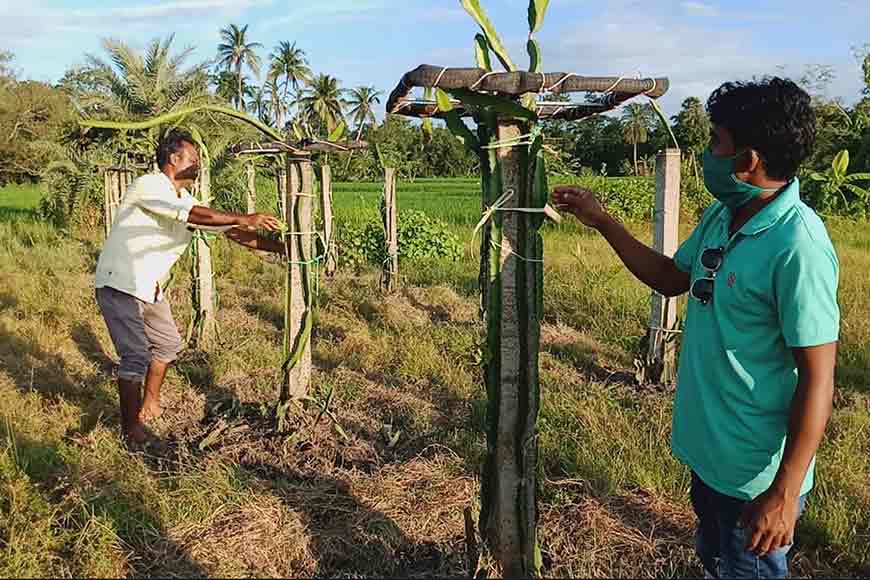
Why dragon fruit, though, instead of more familiar crops? Shaim answers, "Mainly because of its commercial benefits. A single plant will bear fruit for 20-25 years, at a stretch. And the fruit is expensive. Right now, we're selling for Rs 400 a kg." Some of his associates claim that dragon fruit can immunise the body even against such vector-borne diseases as dengue and malaria.
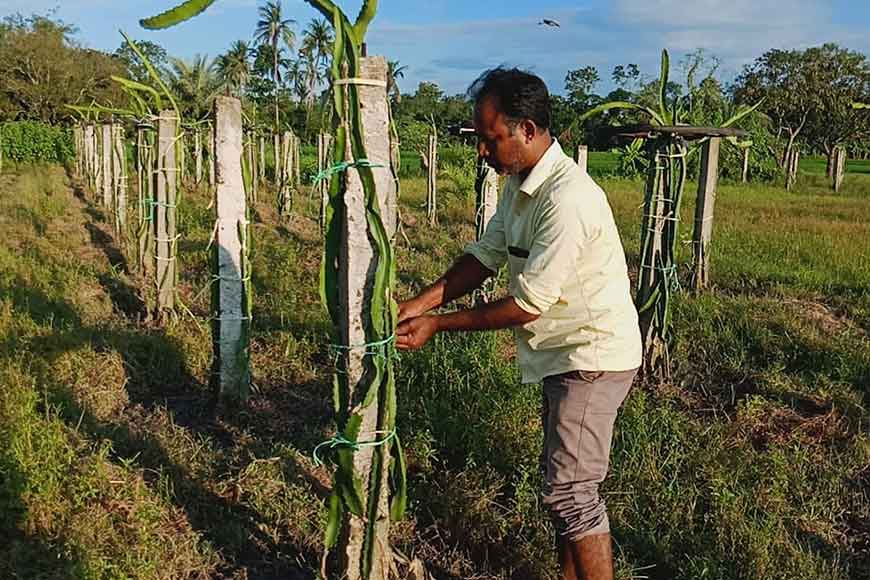
The plant grows best in sandy soil, say the farmers, and each sapling is supported by an iron rod, which is topped with a metal ring, even a bicycle wheel ring will do. The plant rises about five feet from the ground with the rod for support, and the leaves then cascade around the metal ring, like a fountain. This is the plant's fruit-bearing part, and it takes about a month for flowers, which appear about 18 months after planting, to turn into fruits. Even when plucked, these fruits remain fresh for a minimum of 10 to 12 days. A three-year-old tree, say the farmers, is capable of bearing 15 to 20 kg of fruits, while after five years, the capacity increases to between 40 and 50 kg.
Enter the dragon fruit, we say!
With inputs from Firoz Ahmed









